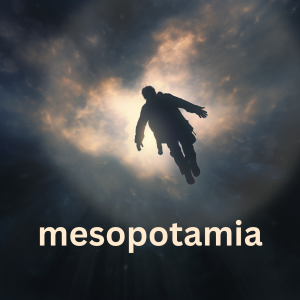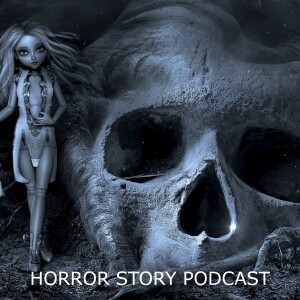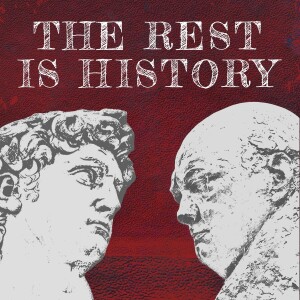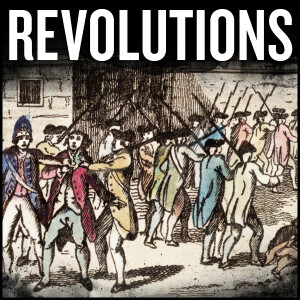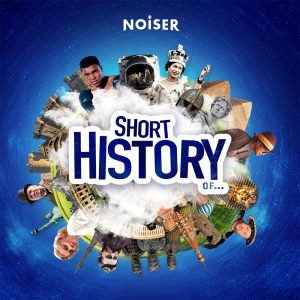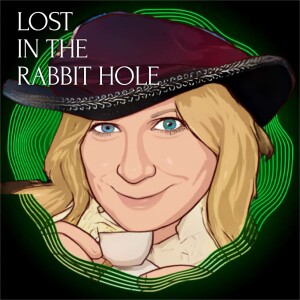

Episode List

Her Eyes Held all The Mourning of the Darkest Sea
Send us a textIn this episode we wander along the coastlines of many Northern places; these are often stark and lonely places, the people who live there quiet to outsiders, but somehow a tale is always shared around a campfire as the whiskey passes from hand to hand. The tales of of the SEAL PEOPLE, the special magical selkies sometimes called silkies, sometimes thought to be quite different from the seals you normally see tearing apart your fishing nets. Don't run afoul of these beings or you might rue the day! Legend has it that these are the beings made from the souls of the drowned, those lost at sea, now magically changed. Join me on this little walk as we share the tale of the Seal People.Podchaser verify codse VpB2kVcouo0P6BwdpvplREFERENCESEpisode title is from, "The Selkie Wife's Daughter", Jeannine Hall Gailey. 2006. "Jeannine Hall Gailey's poems have appeared in The Iowa Review, Rattle, Columbia Poetry Review, and other journals. The poem, which is based on selkie legends, first appeared in Becoming the Villainess (Steel Toe Books, 2006). For more information, visit the author's blog."Tales of the Seal People, Duncan Williamson, 1992; 2019. "A collection of 14 selkie (half-seal half-human creatures) tales from the Orkney and Shetland islands off the northern tip of Scotland which embrace the fantasy, romance and unusual perspective of the Scottish travellers."On Mermaids, Meroveus, and Melusine; Reading the Irish Seal Woman and Melusine as Origin Legend, Gregory Darwin (August 2015), Folklore Journal issue 126. "‘The Seal Woman’, a migratory legend attested throughout north-western Europe, is commonly associated with particular families in Ireland. A structural reading of this legend reveals similarities with other tales and dynastic origin myths involving supernatural, aquatic female ancestor figures, and identifies similar social functions for such narratives."David Thomson (2018) The People of the Sea: Celtic Tales of the Seal-folk: "Introduced by Seamus Heaney, The People of the Sea brings to life the legend of the mythical selchies, in beautiful, poetic prose."Want more selkie tales? Visit Orkneyjar, a website curated by folk enthusiasts and those historically minded. You can read many tales here, some selkie, and find out more just in general about these kinds of stories.WILDERNESS IRELAND, “Irish Myths & Legends Part 4: The Selkie,” Dawn Rainbolt. This is just a super fun website with stories and little facts and more.

PART ONE: And They Ride, And We Hide
Send us a textWelcome to another two-part episode of LOST IN THE RABBIT HOLE -- this is PART ONE. In this episode, we cover just some of the variants of The Wild Hunt tales, which come from Europe, but can also be found in some form all over the world. The Wild Hunt is a tale of a pack of spectral beings riding horses, sometimes flying, late at night. Sometimes there are demon dogs, or other packs of animals. These tales are moral tales, with the riders or hunters presaging something really bad -- war, plague, discord, or even the death of the person who sees the riders. We see in this episode (both parts) that the frame of the pack of ghost hunters carries across cultures, but with some interesting shifts and detail changes. PART ONE: focuses on the background of the tale frame; from WODEN/ODIN leading the pack to the HERLE KING, this is an old lore that is still somehow very elastic. Part one includes the history of FRAU BERCHTA , one of the female figures to lead the pack of night riders.PART TWO: shares other cultures' tales, including THE NIGHT OF A HUNDRED DEMONS from Japan, HAWAIIAN NIGHT MARCHERS, the Canadian New Years tale of THE BEWITCHED CANOE, and the Old American West tale of the GHOST RIDERS. References for Part One of this episode:Jacob Grimm, German Mythology, volume 1D. L. Ashliman, THE WILD HUNT LEGENDSKatharine Briggs, An Encyclopedia of Fairies, Hobgoblins, Brownies, Boogies, and Other Supernatural CreaturesBrian Branston, The Lost Gods of EnglandAri Berk and William Spytma, Penance, Power, and Pursuit: On the Trail of the Wild Hunt Jennifer Westwood. Albion: A Guide to Legendary BritainThe Old Magic of Christmas, Linda RaedischThe Krampus and the Old, Dark Christmas: Roots and Rebirth of the Folkloric Devil, by Al Ridenour Ridenour also has a terrific podcast, here is the episode on Frau BerchtaAlso, from 2011, the VoVatia blog, Baby, Baby, It's a Wild Hunt

PART TWO: And They Ride, And We Hide
Send us a textWelcome to PART TWO, or another two-part episode of LOST IN THE RABBIT HOLE. In this episode, we cover just some of the variants of The Wild Hunt tales, which come from Europe, but can also be found in some form all over the world. The Wild Hunt is a tale of a pack of spectral beings riding horses, sometimes flying, late at night. Sometimes there are demon dogs, or other packs of animals. These tales are moral tales, with the riders or hunters presaging something really bad -- war, plague, discord, or even the death of the person who sees the riders. We see in this episode (both parts) that the frame of the pack of ghost hunters carries across cultures, but with some interesting shifts and detail changes. PART ONE: focuses on the background of the tale frame; from WODEN/ODIN leading the pack to the HERLE KING, this is an old lore that is still somehow very elastic. Part one includes the history of FRAU BERCHTA , one of the female figures to lead the pack of night riders.PART TWO: shares other cultures' tales, including THE NIGHT OF A HUNDRED DEMONS from Japan, HAWAIIAN NIGHT MARCHERS, the Canadian New Years tale of THE BEWITCHED CANOE, and the Old American West tale of the GHOST RIDERS. References for Part Two of this episode:NIGHT OF A HUNDRED DEMONSElizabeth Lillehoj, in her article “Transfiguration: Man-Made Objects as Demons in Japanese Scrolls” (Asian Folklore Studies, Vol. 54, No. 1, pp 7-34; 1995)Michael Dylan Foster (Author), Shinonome Kijin (Illustrator), The Book of Yokai: Mysterious Creatures of Japanese FolkloreMasako Watanabe, Storytelling in Japanese ArtMatthew Meyer's Night Parade of One Hundred DemonsMaria Kitsunebi's blog, HYAKKI YAGYO: THE NIGHT PARADE OF ONE HUNDRED YOKAIAmelia Starling's blog, Tsukumogami: Japan’s Household Spirits, is also really funLA CHASSE-GALARIEDonovan King, Haunted MontrealHonoré Beaugrand, La chasse galerie: Légendes CanadiennesTHE HAWAIIAN HUAKA'I POMartha Warren Beckwith, Hawaiian MythologyWounded: A Native True Crime Podcast, Night Marchers: Huaka'i Po' This is a blog post from the To Hawaii website The Legend of the Nightmarchers AMERICAN OLD WEST GHOST RIDERSFairweather Lewis's blog post on the song Ghost Rider's In The Sky

PART TWO: Getting Lost, Being Found
Send us a textAre you ready for PART TWO, where we continue the tale of the abandoned children, "Little Brother and Little Sister", aka Hansel and Gretel?"Tale Types: Abandoned ChildrenWhat’s always so fun about these tales is to see how they are often mash-ups of other sorts of tales, but with a core narrative running through. For many of these abandoned children tales, we have three recurrent patterns: the children are lost in some manner in a forest, they meet an ogre, there’s a “show me how” moment within the tale, and the children return home."Versions Referenced in this episode:"Little Brother and Little Sister" aka "Hansel and Gretel" (Germany, Jacob and Wilhelm Grimm, 1812-1840)"Ninnillo and Nennella" (Italy, Giambattista Basile, 1635) also here"Little Thumb" aka "Hop on my Thumb" (France, Charles Perrault, 1697)"Jan and Hanna" (Poland, author unknown, 1863)"Finette Cedron" aka Cunning Cinders, (France, Marie-Catherine D'Aulnoy, 1967)"Little Earth Cow" (Alsace, Martin Montanus, 1557)Reference MaterialsThe Golden Age of Folk and Fairy Tales: From the Brothers Grimm to Andrew Lang by Jack ZipesThe Classic Fairytales, Iona and Peter OpieThe Third Horseman A STORY OF WEATHER, WAR, AND THE FAMINE HISTORY FORGOT By William Rosen

PART ONE: Getting Lost, Being Found
Send us a textThis is HUGE! For the month of DECEMBER the LOST IN THE RABBIT HOLE podcast will be a TWO PARTER! Join me as I delve into the variant tales of abandoned children. Hansel and Gretel are only a part of this story.We begin: "Long, long ago, beside one such Winter forest there lived a poor woodcutter with his wife and their two children – a little boy and a little girl. They lived humbly in a house made of wattle and daub, all snug together under their thatch roof. There was a little coop around back for the chickens, and the woodcutter’s wife kept a vegetable garden full of lush, ripe tomatoes in the summer and squash in the fall. The house was perfectly placed between two aspen sentries, each guarding a side."Come along down the sugared path and I promise, no one will bite. PART TWO is available immediately. Versions Referenced in this episode:"Little Brother and Little Sister" aka "Hansel and Gretel" (Germany, Jacob and Wilhelm Grimm, 1812-1840)"Ninnillo and Nennella" (Italy, Giambattista Basile, 1635) also here"Little Thumb" aka "Hop on my Thumb" (France, Charles Perrault, 1697)"Jan and Hanna" (Poland, author unknown, 1863)"Finette Cedron" aka Cunning Cinders, (France, Marie-Catherine D'Aulnoy, 1967)"Little Earth Cow" (Alsace, Martin Montanus, 1557)Reference MaterialsThe Golden Age of Folk and Fairy Tales: From the Brothers Grimm to Andrew Lang by Jack ZipesThe Classic Fairytales, Iona and Peter OpieThe Third Horseman A STORY OF WEATHER, WAR, AND THE FAMINE HISTORY FORGOT By William Rosen
Create Your Podcast In Minutes
- Full-featured podcast site
- Unlimited storage and bandwidth
- Comprehensive podcast stats
- Distribute to Apple Podcasts, Spotify, and more
- Make money with your podcast
